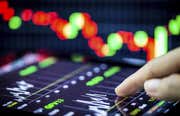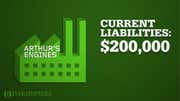|

|
Throughout this tutorial, we’ve explained how to calculate a company’s economic profit, using Disney in FY2015 as a model. Now, having explored the different components of economic profit and the ways to go about finding it, we’ll further examine some of the core adjustments you may want to consider while calculating economic profit for a company. We’ll also attempt to put the economic profit metric into perspective by comparing it with other metrics, and we’ll look at key strengths and shortcomings of economic profit as a performance metric.
The Recap
We’ve now seen economic profit in action, and you’ve probably observed that most of the reason it is perceived as complex is because it entails two types of adjustments that convert accounting earnings into net operating profit after taxes (NOPAT). The goal of both types of adjustments is to take an accounting profit and translate it into an economic profit which reflects cash invested and generated. Figure 1 is an illustration which recaps this process.
 Figure 1 |
In order to convert from accounting profit to economic profit, we begin with the earnings before interest and taxes (EBIT) for the period and company in question. We then make two types of adjustments; first, we reverse accruals in order to reflect cash flows, and second, we capitalize expenses that we believe should be treated as investments. Then, having attained NOPAT, we have to subtract out capital charge. Capital charge is equal to total invested capital (which requires us to make adjustments to invested book capital) multiplied by the weighted average cost of capital, or WACC.
Core Adjustments
By far the most important aspect of the process is maintaining consistency in the way that you make adjustments and calculations throughout the process. Always match an income statement adjustment to a corresponding balance sheet adjustment.
An “ideal” economic profit calculation would capture every dollar of invested capital, making every adjustment in order to find the precise level of cash flow. However, it’s not especially important to have the perfect economic profit number. Academic studies have shown that the incremental information which is gained beyond a few basic and crucial adjustments is actually minimal. You’ll save time and headaches by using just those basic adjustments to reach an approximation.
The table below reflects some of the selected core adjustments. Those in the left column are used to convert EBIT to NOPAT; the corresponding balance sheet adjustment on the right is used to convert book capital to invested capital.
 |
Economic Profit in Perspective
What does economic profit offer investors as an analytical tool? The best way to see its worth is to compare it against other popular metrics. We’ll begin by determining the levels of analysis. Does the metric capture dollars created for the entire entity (meaning both lenders and shareholders), or does it do so only for the shareholder? Or, perhaps it captures excess dollars created for both shareholders and lenders? Figure 2 below indicates which levels of analysis the different types of valuation metrics indicate. It also shows which are performance metrics and which are wealth metrics.
 Figure 2 |
 |
In the figure above, the levels of analysis are labeled across the top. The two columns under “Entity” represent those metrics before and after reinvestment, respectively. The purpose of the two columns is to distinguish between metrics which include capital expenditures and those which don’t. EBITDA, for example, is before depreciation and amortization (D&A), therefore it is before the non-cash charge which reduces earnings by the amortized investment. EBIT, on the other hand, is after D&A, though it’s not cash based. It recognizes a charge for investments.
On the left side of the figure, we see three rows corresponding to performance metrics (accrual, which are based on accounting flows; cash flow, and returns). There is also a row for wealth metrics.
In looking at the chart, it can be difficult to surmise the difference between economic profit and cash value added (CVA), as each represents residual dollar returns. Economic profit, although utilizing adjustments, is essentially based on accrual. CVA, by comparison, is a metric which aims to correct or reverse the incorporation of accruals by adding back in non-cash charges of D&A.
Figure 2 also indicates how performance metrics have corresponding return and wealth metrics. As an example, return on gross invested capital (ROGIC) corresponds to EBITDA. ROGIC adds back depreciation to capital in the denominator; thus, both of these metrics are before D&A in the same way.
Economic spread is the returns metric which is analogous to economic profit. Economic spread expresses economic dollars in percentage terms, and it can be conceived of as a rearrangement of the basic economic profit formula:
Economic profit = NOPAT – [WACC x Invested Capital]
therefore
Economic profit = [ROIC x Invested Capital] – [WACC x Invested Capital] = [ROIC – WACC] x Invested Capital
Thus, the difference between return on invested capital (ROIC) and the WACC is the economic spread.
Strengths and Shortcomings of Economic Profit as a Metric
As figure 2 shows, economic profit is one of many useful performance measures. Each of them offers different types of insights into a company. Some of the strengths of economic profit include the following:
- Because it is an operational metric, economic profit can help managers to clarify how they create value. They can do this either by investing additional capital that produces returns above WACC, or by reducing capital employed in a business, or by improving returns by growing revenues or reducing expenses or the cost of capital.
- Economic profit is a residual performance metric, meaning it conveniently summarizes into one statistic the value a company creates above and beyond all financial obligations
- It holds an advantage over earnings and earnings per share; they do not incorporate the balance sheet. Because economic profit applies a capital charge, it recognizes that capital is not free.
On the other hand, there are some shortcomings of this method as well:
- Economic profit can be subject to accrual distortions, unless all cash adjustments are made. As an example, because NOPAT is calculated after D&A, a company which does not reinvest capital in maintenance can improve its accrual bottom line by simply declining D&A. An attempt at boosting economic profit through these means is commonly known as “harvesting the assets.”
- Like any single-period and historical metric, economic profit does not necessarily help you to predict future performance. If a company is in a turnaround scenario, or if it makes a large, lump-sum investment, economic profit will suffer as a result because of higher invested capital base. The future payoff, on the other hand, will not show up as a benefit yet.
Economic profit is typically used for analyzing asset-intensive firms, or those with value largely generated by tangible assets. This is because economic profit relies on invested capital. Thus, the best way to use economic profit is typically for traditional, mature industries. It is less useful for companies which are valuable solely because of intangible, off-balance-sheet assets. For this reason, economic profit is not commonly used for either high-tech or service-oriented companies.
EVA: Conclusion
-
 Investing
InvestingInterpreting a Strategy Performance Report
A strategy performance report can provide key metrics to decide if your strategy is a winner. -
 Investing
InvestingCalculating Economic Profit
Economic profit is the difference between the revenue a firm earns from sales and the firm’s total opportunity costs. -
 Investing
InvestingUnderstanding Economic Value Added (TM)
Discover the simplicity of Economic Value Added (TM), also known as economic profit. -
 Investing
Investing3 Profit Metrics Every Investors Should Understand
In this article, you will understand how the three metrics gross profit, operating profit, and net profit helps investors see how a company is performing. -
 Financial Advisor
Financial AdvisorWorking Capital
Working capital is one of the basic metrics used to evaluate a company's financial health. Find out what it can tell you about a stock and learn how to calculate it. -
 Investing
InvestingEarnings Per Share Explained
Earnings per share is one of the most carefully followed metrics in investing. We show you why this ratio matters and how to calculate it. -
 Insights
InsightsEconomics Basics
Learn economics principles such as the relationship of supply and demand, elasticity, utility, and more!


